What are Japanese beetles?
Japanese beetles (Popillia japonica) are an invasive beetle from Japan that feed on the leaves and flowers of crops. They mainly feed on corn and soybeans, but can also be a pest to ornamental plants, fruits, and turf.
What do Japanese beetles look like?
Larvae: The larvae have white, segmented bodies with brown heads. They reach about 1.25 inches at maturity and resemble many other species’ larvae such as the June beetle.
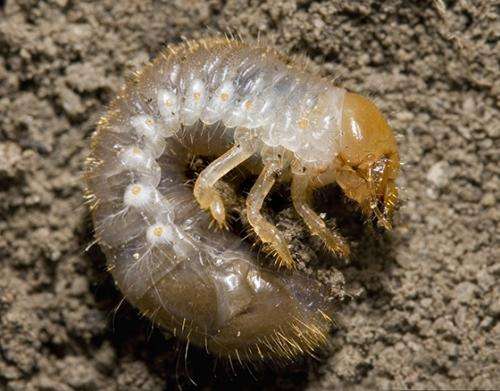
Adult: Adults are about 0.5 inches long with characteristic metallic bronze wings. Their bodies are a shiny green with 6 furry white patches along their sides.

What are the life cycle and biology of Japanese beetles?
Adult beetles emerge in mid-June (around 1000 degree days) and produce one generation per year. Around this time, they lay their eggs in the soil and start to feed on the foliage of plants. The larvae hatch in 2 weeks and do the most damage to roots in September and October. They continue to eat until temperatures drop below 50°F where they overwinter in the soil. In the spring, the grubs reawaken and feed for 3-4 weeks until they pupate.
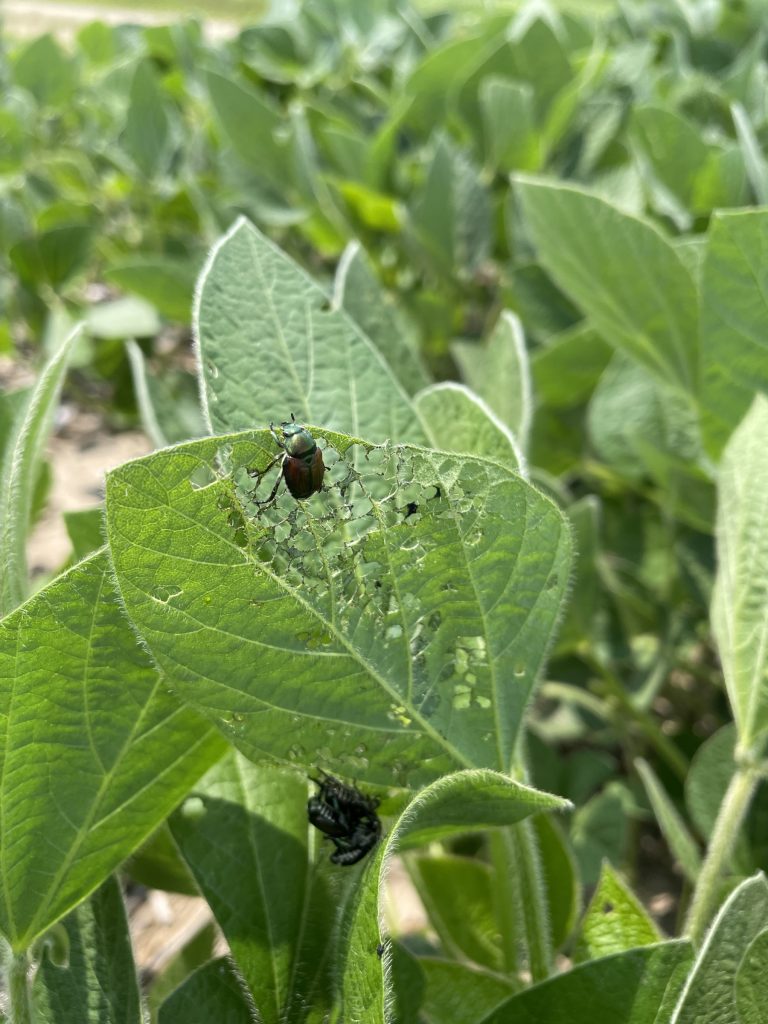
What are the symptoms of Japanese beetle damage?
Both adult and larval Japanese beetles can cause damage to crops. Adult beetles eat the flowers and leaves of many different plants, which skeletonizes the leaves, leaving a lace-like appearance. They also feed on corn silks which can decrease or prevent pollination. The upper layer of crops are often the most damaged but severe infestations can cause damage to all three layers.
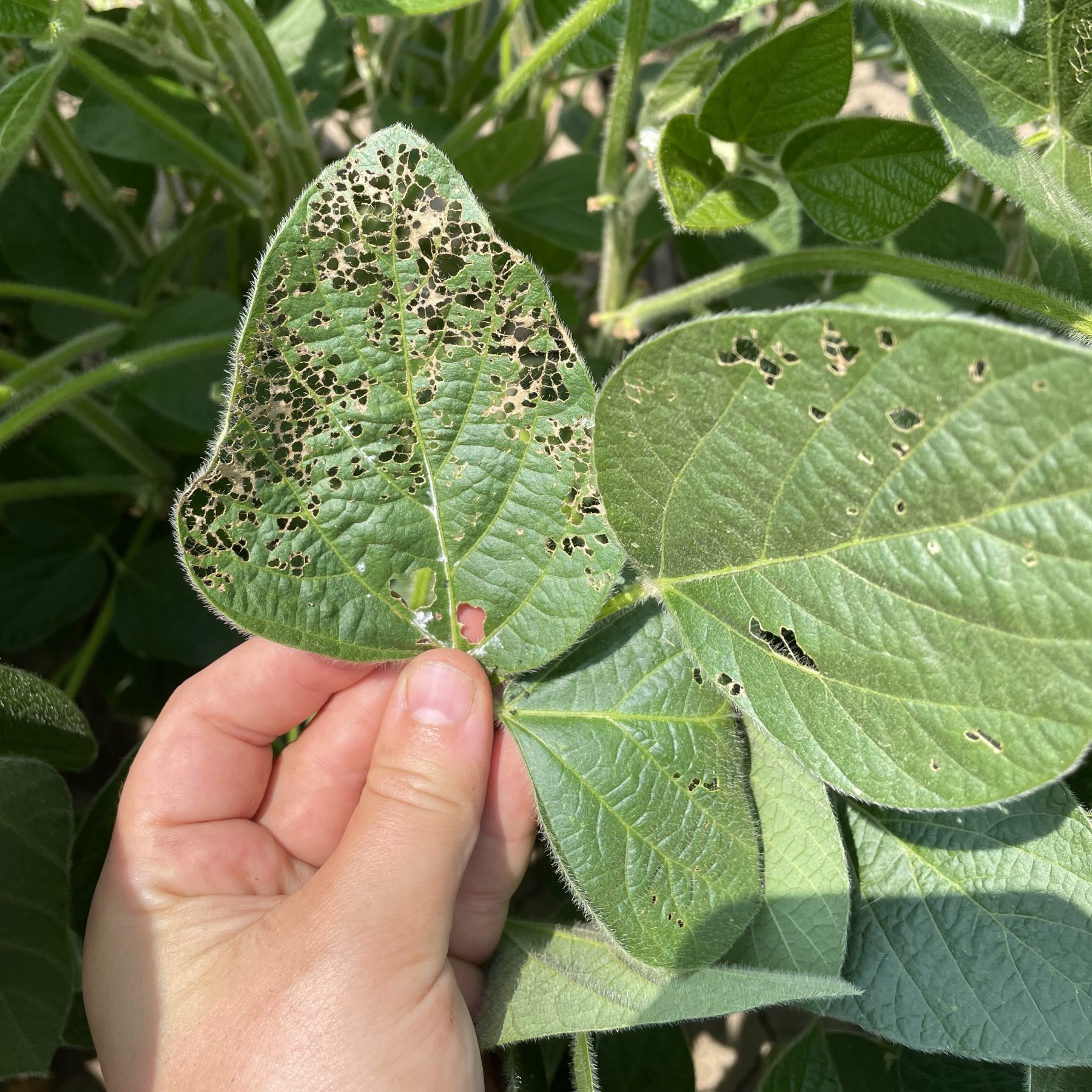
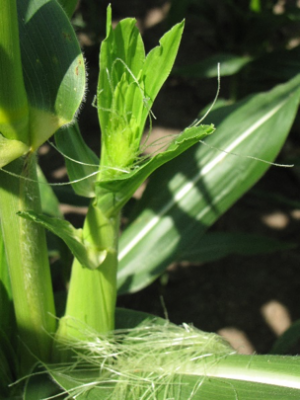
Larvae develop entirely in the soil and eat the roots of ornamental plants and turf. This damage usually does not reduce plant yield or vigor, but large infestations can cause turf to become unanchored. Severely damaged turf can be rolled up like sod.
How do you scout for Japanese beetles?
Scouting for beetles is different depending on the affected crop. Baited traps should never be used to assess beetle presence as they only attract more beetles to the field.
For corn, check 5 sets of 20 plants for feeding beetles. Note the tassel length, pollination progress, and number of beetles per ear.
For soybeans, scout 10 plants throughout the field. Look at those in the trifoliate stage and examine the upper, middle, and lower canopy on each plant, noting the extent of the damage.
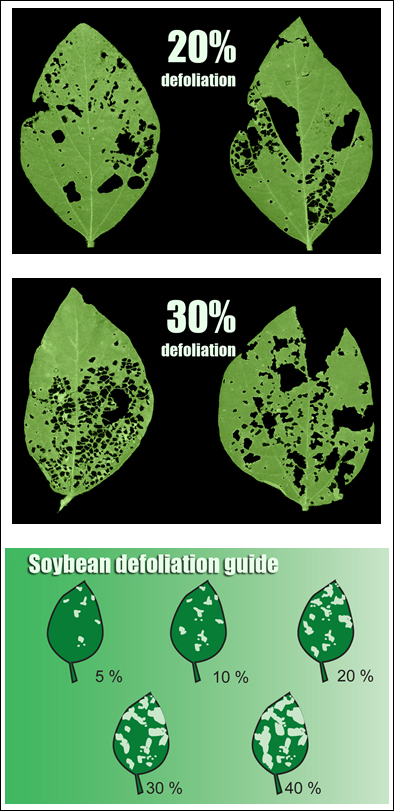
Photo of a soybean defoliation guide. Photo credit: University of Wisconsin-Madison Integrated Pest and Crop Management Toolkit App
What is the threshold to reach for Japanese beetle treatment?
In corn, the economic threshold for Japanese beetle treatment is 3 actively feeding beetles per ear. In addition, silks must be less than 0.5 inches long and pollination less than 50% complete.
For soybeans, the economic threshold is 20% leaf defoliation in plants that have bloomed and 30% in those that have not.
Integrated pest management (IPM) strategies for Japanese beetles
Cultural Control: If possible, keep the soil dry early in the spring so feeding larvae can dry out, resulting in beetle mortality. Avoid bait traps as they can attract more beetles to the field and worsen the infestation.
Biological Control: Grackles, starlings, moles, shrews, and skunks are known to eat Japanese beetles. One species, the Winsome Fly (Istocheta aldrichi), has been introduced from Japan to try and limit beetle populations. These flies lay eggs on the back of the beetles and once hatched, the larvae bore into the beetles and kill them. Since the flies primarily target female Japanese beetles, they may be a good option to control population growth.
Chemical Control: Refer to A3646, Pest Management in Wisconsin Crops, by following these links for Japanese beetle insecticide recommendations in corn (pg. 71) and soybeans (pg. 129).
It is best to apply insecticides in the afternoon when beetles are the most active. There are also preventative insecticides that can be applied before egg laying in early July to control larval populations.
Japanese beetle response and management options
Monitor weather conditions and crop growth stage to determine optimal timing for harvesting or insecticide applications, as needed.
Apply insecticides according to label instructions and consider factors such as application method, rate, and pre-harvest intervals.
Consider alternative management practices in severely infested fields.
Environmental and ecological considerations for Japanese beetle treatment
Minimize pesticide use whenever possible to reduce potential impacts on non-target organisms and environmental health.
Implement IPM practices that promote biological diversity and ecosystem resilience.
References
Additional resources
For assistance with Japanese beetle management and other agricultural pest issues, contact your local agricultural extension office or entomology expert.


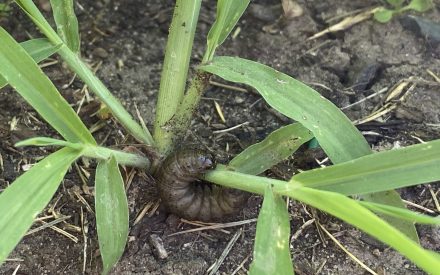 Managing Black Cutworm in Wisconsin Corn Fields
Managing Black Cutworm in Wisconsin Corn Fields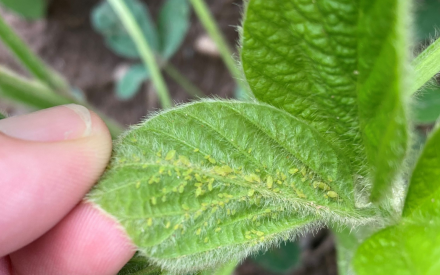 Managing Soybean Aphids in Wisconsin Soybean Fields
Managing Soybean Aphids in Wisconsin Soybean Fields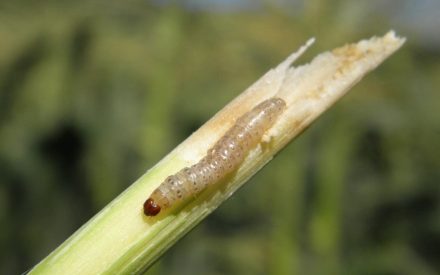 Managing European Corn Borer in Wisconsin Corn Fields
Managing European Corn Borer in Wisconsin Corn Fields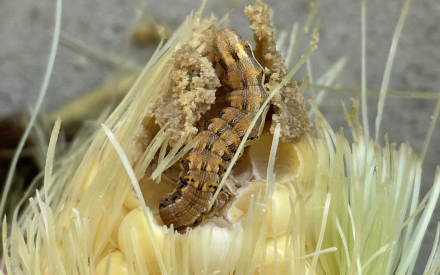 Managing Corn Earworm in Wisconsin Corn Fields
Managing Corn Earworm in Wisconsin Corn Fields


